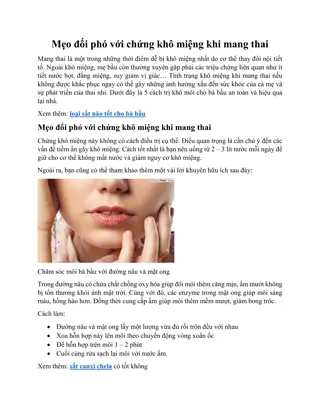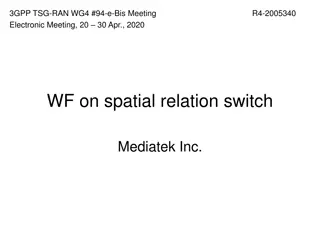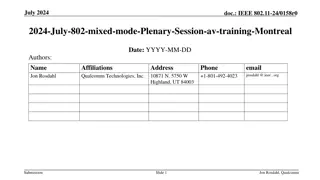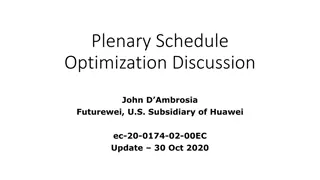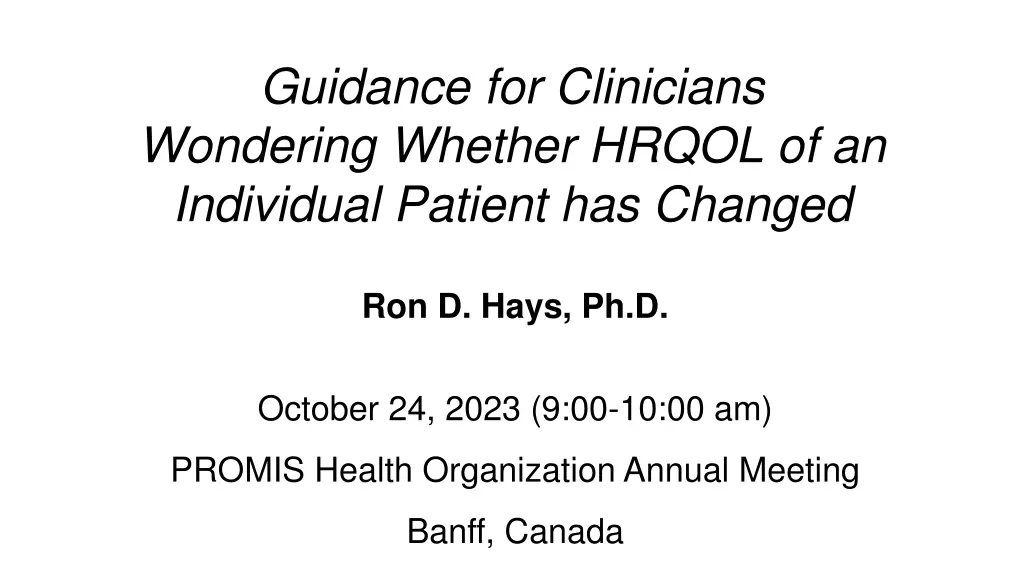
Guidance for Clinicians on Assessing Health-Related Quality of Life Changes
Learn about assessing changes in Health-Related Quality of Life (HRQOL) in individual patients, including terminology, significance, and obstacles. Explore the importance of HRQOL in clinical practice and research, with insights on implementing patient-reported outcomes assessments. Discover valuable information from experts in the field to enhance patient care.
Download Presentation

Please find below an Image/Link to download the presentation.
The content on the website is provided AS IS for your information and personal use only. It may not be sold, licensed, or shared on other websites without obtaining consent from the author. If you encounter any issues during the download, it is possible that the publisher has removed the file from their server.
You are allowed to download the files provided on this website for personal or commercial use, subject to the condition that they are used lawfully. All files are the property of their respective owners.
The content on the website is provided AS IS for your information and personal use only. It may not be sold, licensed, or shared on other websites without obtaining consent from the author.
E N D
Presentation Transcript
Guidance for Clinicians Wondering Whether HRQOL of an Individual Patient has Changed Ron D. Hays, Ph.D. October 24, 2023 (9:00-10:00 am) PROMIS Health Organization Annual Meeting Banff, Canada
Basic Premises and Terminology Statistically significant group mean difference may be trivial MCID: Minimal or minimally clinically important difference MID: Minimal or minimally important difference MIC: Minimal or minimally important change Meaningful change An obviously important difference Individual change significant at p <.05 is always important Coefficient of repeatability Minimally detectable change Smallest real difference Smallest detectable change 2
Health-Related Quality of Life (HRQOL) Uses Research: Randomized clinical trials and observational studies Quality improvement Public reporting (e.g., CDC) Certification and recognition (NCQA) Value-based purchasing
Health-Related Quality of Life (HRQOL) Uses Research: Clinical trials and observational studies Quality improvement Public reporting Certification and recognition Value-based purchasing
Obstacles to Health Status Assessment in Ambulatory Settings How to fit it into brief patient encounters? When do I measure it? What do I do with the information? What difference does it make? Wasson, Keller, Rubenstein et al. (1992), Medical Care
Implementing patient-reported outcomes assessment in clinical practice: a review of the options and considerations HRQOL is increasingly collected in a standardized fashion in routine clinical practice. improves patient-clinician communication may improve HRQOL Velikova et al. (2004, J Clin Oncol) Basch et al., (2017, JAMA) Snyder, C.F., Aaronson, N. K., et al. (2012). Quality of Life Research, 21, 1305-1314. 6
Is Receiving Better Technical Quality of Care Bad for Health? Change in SF-12 PCS regressed on process-of-care aggregate SF-12 PCS Process of care Hypothesized positive effect, but regression coefficient was in the WRONG DIRECTION and not statistically significant: unstandardized beta = -1.41, p =.188 Kahn et al. (2007), Health Services Research, Article of Year
Individual Change in HRQOL Research: Clinical trials and observational studies Supplement group mean differences But is rarely reported.
Physical Functioning (PF) and Emotional Well-Being (EWB) at Baseline for 54 Patients at UCLA-Center for East West Medicine SF-36 EWB SF-36 PF MS = multiple sclerosis; ESRD = end-stage renal disease; GERD = gastroesophageal reflux disease. Hays, R. D., Brodsky, M., Johnston, M. F., Spritzer, K. L., & Hui, K. (2005). Evaluating the statistical significance of health-related quality of life change in individual patients. Evaluation and the Health Professions, 28, 160-171. 9
Significant Mean improvement 6-weeks later in all but 1 SF-36 Scale Change t-test prob. PF-10 RP-4 BP-2 GH-5 EN-4 SF-2 RE-3 EWB-5 PCS MCS 1.7 4.1 3.6 2.4 5.1 4.7 1.5 4.3 2.8 3.9 2.38 3.81 2.59 2.86 4.33 3.51 0.96 3.20 3.23 2.82 .0208 .0004 .0125 .0061 .0001 .0009 .3400 .0023 .0021 .0067 Change is in T-score metric.
Minimally important change (MIC) should not be used to identify responders to treatment Underestimates the amount of change needed to be significant at the individual level due to larger measurement errors for individual change scores.
Abu et al. (2020) used MIC threshold of 5 as cutoff to identify if patients changed on the Atrial Fibrillation Effect QualiTy-of-Life (AFEQT) Questionnaire Abu HO, Saczynski JS, Mehawej J, Tisminetzky M, Kiefe CI, et al. 2020. J Am Heart Assoc. 9(18):e016651
What are the Minimum Clinically Important Differences in SF-36 Scores in Patients with Orthopaedic Oncological Conditions? 310 orthopedic oncology patients underwent musculoskeletal surgery < 6 months (time 1) and 1-2 years (time 2) after surgery Distribution-based MIC estimates for PCS and MCS Half SD (5 for both) Standard error of measurement (6 for PCS and 5 for MCS) Anchor-based estimates for PCS and MCS Compared to when you last completed the questionnaire, is your musculoskeletal condition much better, somewhat better, about the same, somewhat worse, or much worse? 4 for improvement (PCS and MCS) Ogura et al. (2020). Clinical Orthopaedics and Related Research, 478: 2148-2158.
What are the MCIDs for PROMIS, NDI, and ODI instruments among patients with spinal conditions? Median estimated MCID was 8 for PROMIS physical function Hung et al. (2018,Clin Orthop Relat Res) estimated minimum detectable change Goldstein et al. (2015) also erroneously referred to significant individual change as the minimum clinically important change.
Identifying Responders: Reliable Change Index (RCI) X X 2 1 >= 1.96 ( 2 ( ) ) SEM = 1 SEM SD r bl xx SEM= standard error of measurement SDbl= standard deviation at baseline rxx = reliability
Amount of Change in Individuals Score for Statistical Significance (p <.05) ( 2 (SD) ) r - (1 (1.96) ) xx 1 = 2.77 * SEM SD r = 2.77 * xx Coefficient of repeatability (aka minimally detectable change, smallest real difference, and smallest detectable change ). Note: SD= standard deviation and rxx = reliability
Individual T-Score Change Needed for p < .05 Significance at .90 and .95 Reliability Reliability =.90 Reliability =.95 p-value Critical value Critvalue * sq2 2.772 2.772 SEM CR .05 .05 1.960 1.960 3.162 2.236 8.765 6.198 CR = Coefficient of Repeatability (minimally detectable change, smallest real difference, smallest detectable change) 17
Effect Sizes for Mean SF-36 Score Changes Effect Size ES = 0.20 Small ES = 0.50 Medium ES = 0.80 Large 0.53 50 0.36 0.13 0.35 0.35 0.21 0.11 0.41 0.24 0.30 45 40 35 30 25 Baseline 20 Followup 15 10 5 0 PFI Role-P Pain Gen H Energy Social Role-E EWB PCS MCS PFI = Physical Functioning; Role-P = Role-Physical; Pain = Bodily Pain; Gen H=General Health; Energy = Energy/Fatigue; Social = Social Functioning; Role-E = Role-Emotional; EWB = Emotional Well-being; PCS = Physical Component Summary; MCS =Mental Component Summary.
Effect Sizes for Mean SF-36 Score Changes Effect Size ES = 0.20 Small ES = 0.50 Medium ES = 0.80 Large 0.53 50 0.36 0.13 0.35 0.35 0.21 0.11 0.41 0.24 0.30 45 40 35 30 25 Baseline 20 Followup 15 10 5 0 PFI Role-P Pain Gen H Energy Social Role-E EWB PCS MCS .67 .72 1.01 1.13 1.33 1.07 0.71 1.26 .62 .73 PFI = Physical Functioning; Role-P = Role-Physical; Pain = Bodily Pain; Gen H=General Health; Energy = Energy/Fatigue; Social = Social Functioning; Role-E = Role-Emotional; EWB = Emotional Well-being; PCS = Physical Component Summary; MCS =Mental Component Summary.
7-31% of People in Sample Improved Significantly Improving - Declining + 11% + 29% + 15% + 7% + 7% + 13% 0% + 15% + 17% + 11% % Improving % Declining PF-10 RP-4 BP-2 GH-5 EN-4 SF-2 RE-3 EWB-5 PCS MCS 13% 31% 22% 7% 9% 17% 15% 19% 24% 22% 2% 2% 7% 0% 2% 4% 15% 4% 7% 11%
IRT Reliable Change Index (IRT) ?2 ?1 ????(???2+ ???2) SEb2 = Variance at baseline, SEf2 = Variance at follow-up Jabrayilov et al. (2016). Applied Psychological Measurement 21
Different Change Categories in Observational Study of Chronic Low Back and Neck Pain Patients Getting Chiropractic Care (Baseline to 3 Months Later) PROMIS Scale Worse Same Better 3% 91% 6% Physical Function Significant according to IRT standard errors and two-tailed (p < .05) test. Hays, Spritzer & Reise, (2023). Psychometrika 22
Expanding the Number of Change Categories Using Two- and One-Tailed Tests Definitely Probably Same Probably Definitely Worse Worse Better Better Physical 3% 3% 84% 4% 6% Function Note: Definitely Worse and Definitely Better groups defined as significant change according to item response theory standard errors and two-tailed test. Probably Worse and Probably Better groups defined as significant change according to one-tailed test. 23
Expanding the Number of Change Categories Using Two- and One-Tailed Tests Definitely Probably Same Probably Definitely Worse Worse Better Better Physical 3% 3% 84% 4% 6% Function Note: Definitely Worse and Definitely Better groups defined as significant change according to item response theory standard errors and two-tailed test. Probably Worse and Probably Better groups defined as significant change according to one-tailed test. 24
Individual Change in HRQOL Quality improvement Individual patient monitoring
Use of HRQOL Measures in Clinical Practice IDEAL Identify/elicit the problem Discuss/co-create planned actions Enact action(s) Action(s) Learn about the effects
Reliability Target for Individual Assessment 0.90 or above SE = SD (1- reliability)1/2 Reliability = 1 (SE/10)2 Reliability = 0.90 when SE = 3.2 95% CI = true score +/- 1.96 x SE (observed score = true score if = mean) 27
Likely Change Donaldson, 2008, QLR Suggested relaxing .05 p-value because it misclassifies patients who feel they have changed. Peipert et al. 2023, QLR .32 p-value corresponded more closely than .05 to mean change for those who were a little or lot better (worse).
T-Score Change Needed for Statistical Significance Reliability =.90 Reliability=.95 p-value Critical value Critvalue * sq2 2.772 2.333 1.406 0.953 2.772 2.333 1.406 0.953 SEM CR .05 .10 .32 .50 .05 .10 .32 .50 1.960 1.650 0.994 0.674 1.960 1.650 0.994 0.674 3.162 3.162 3.162 3.162 2.236 2.236 2.236 2.236 8.765 7.379 4.445 3.014 6.198 5.218 3.143 2.131 31
Meaningful individual change Patient-Reported Outcome Measures: Use in Medical Product Development to Support Labeling Claims (2009) Incorporating Clinical Outcome Assessments into Endpoints for Regulatory Decision-Making (December 6, 2019, patient-focused drug development guidance public workshop) Focuses on average change for patients who improved or got worse. Another anchor-based approach to defining responders makes use of patient ratings of change administered at different periods of time or upon exit from a clinical trial. These numerical ratings range from worse to the same and better. The difference in the PRO score for persons who rate their condition the same and better or worse can be used to define responders to treatment (p. 25).
Meaningful Change on the ISS Impact Stratification Score (ISS) assessed at baseline and 6 weeks 750 active-duty U.S. military with low back pain treated with usual care alone or usual care plus chiropractic ISS reliability = 0.92, SD = 8.5 Coefficient of repeatability = 8 for p<.05 Compared to your first visit, your low back pain is: 1: A little better, Moderately better, Much better, or Completely gone 2: Moderately better, Much better, or Completely gone Optimal cut-point = 6 (for #1 above) and 8 (for #2 above) Hays & Peipert, 2021, Quality of Life Research 33
T-Score Change Needed for Statistical Significance Reliability =.90 Reliability=.95 p-value CR Meaningful 8 6 MIC .05 .10 .32 .50 .05 .10 .32 .50 8.765 7.379 4.445 3.014 6.198 5.218 3.143 2.131 Moderately better + A little better A little better + A little better 3 3 34
6-Week Change in Impact Stratification Score in 750 active-duty U.S. military with low back pain treated with usual care alone or usual care plus chiropractic 59% reported retrospectively that they were a little better, moderately better, much better, or their pain was completely gone post-baseline. 37% had a statistically significant (p <.05) improvement. 40% 37% 33% 35% 30% 26% 25% 20% 15% 10% 4% 5% 0% Most Desirable Least Desirable Intermediate Improved statistically No No Yes Yes Reported Being Better No Yes No Yes 35 Hays & Peipert (2021)
Another Another Consideration in Consideration in Assessing Assessing Individual Individual Change: Where Change: Where One Ends Up One Ends Up A primary care physician might be interested in whether a patient ends up within the normal blood pressure range following initiation of high blood pressure medicine. A rehabilitation clinician might want to know if a patient with impaired physical functioning at the beginning of treatment ends up functioning as well as other people with a similar condition.
Person Fit Person misfit may be suggestive of response carelessness or cognitive errors due to survey items being difficult to comprehend . Person fit using the standardized Z(L) fit index. Large negative Z(L) values indicate unlikely response patterns given the model. On PROMIS physical functioning item bank someone reported - A little difficulty being out of bed most of the day. & - Able to run 5 miles without any difficulty Reise (1990); Hays, Calder n et al. (2018)
Multiple Observations Are Ideal But the number recommended is large 10+ per subject Borckardt et al. (2008), American Psychologist 15 per subject Moinpour et al. (2017),Quality of Life Research See critique of RCI When (Not) to Rely on the Reliable Change Index https://osf.io/3kthg 38
Recommendations for Your Patients Recommendations for Your Patients Evaluate the statistical significance of individual change at multiple p-values (.05, .10, .32). Combine statistical significance with the patient s perception of change Definitely improved statistically Patient felt they improved (retrospectively) Patient felt they did not improve Probably improved statistically Patient felt they improved Patient felt they did not improve Stayed the same statistically Patient felt they improved Patient felt they did not improve Patient felt they got worse Probably got worse Patient felt they got worse Patient felt they did not get worse Definitely got worse Patient felt they got worse Patient felt they did not get worse 39





